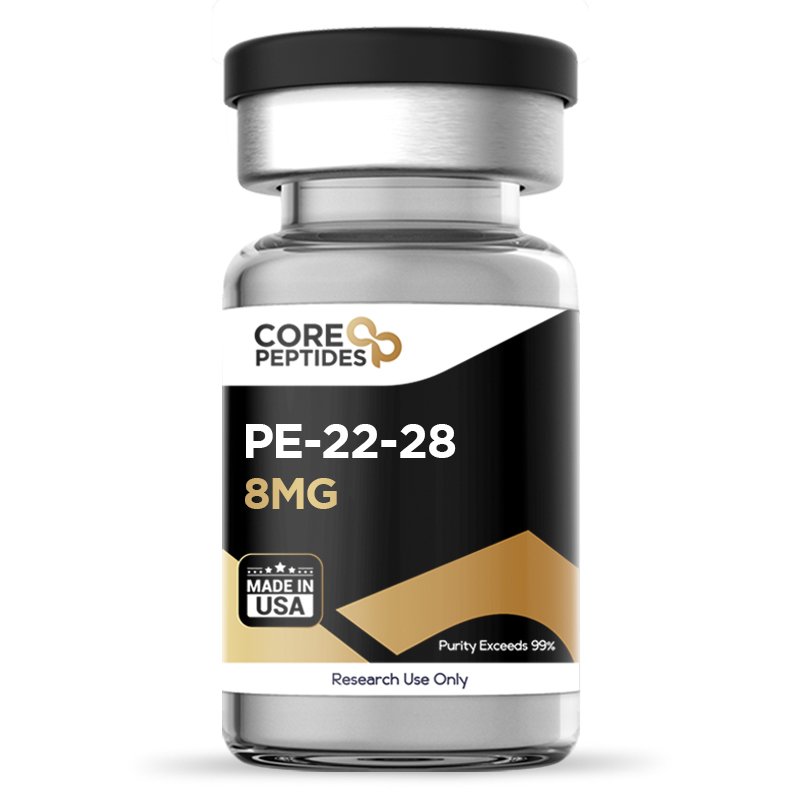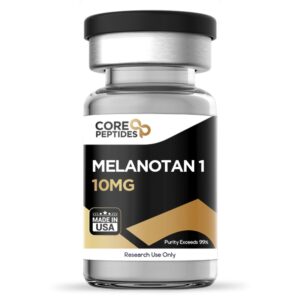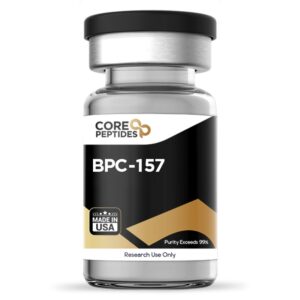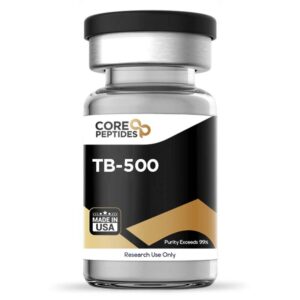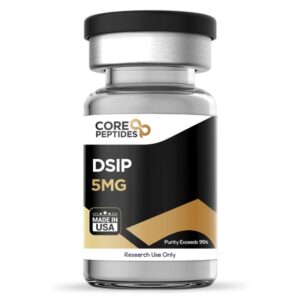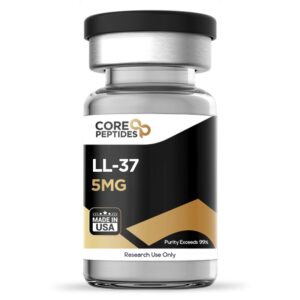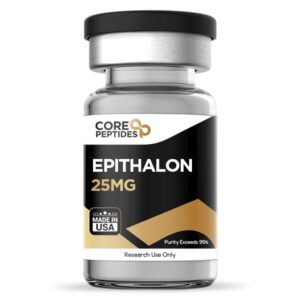PE-22-28 (8mg)
$54.00
Size: 8mg
Contents: PE-22-28 (8mg)
Form: Lyophilized powder
Purity: >99%
SKU: P-PE2228-8
FREE Shipping on $200+ orders
Discount per Quantity
| Quantity | Discount | Price |
|---|---|---|
| 5 - 8 | 5% | $51.30 |
| 9 + | 10% | $48.60 |
PE-22-28 Peptide
PE-22-28 is a synthetic derivative of the naturally occurring protein called spadin.(1) Spadin is a natural peptide derived from sortilin, an abundant protein in the central nervous system. PE-22-28 peptide is one such shortened peptide derivative of this protein; similar to spadin, PE-22-28 research indicates it primarily acts via the TREK-1 receptor. Researchers Djillani et al. commented that PE-22–28 may be "the shortest, most efficient sequence capable of blocking the TREK-1 channel" and may have a potentially higher potency in research settings than spadin.(2)
TREK-1 (TWIK-related potassium channel) receptor is a two-pore potassium channel recently identified as a potential target for studying and modifying animal models of depression. In 2010, research(3) suggested that when TREK-1 receptors were removed from murine models, they became more resistant to depression. TREK-1 receptor is primarily found in the brain region, including the prefrontal cortex and hippocampus, i.e., areas governing mood, memory, and learning. Simulating the TREK-1 receptor may reduce neuron excitability, whereas reducing the receptor activity may increase neuron excitability.(4) While mainly evaluated in the study of depression models, this receptor may also play a strong role in anesthesia, pain perception, and protection of neurons.
Overview
Studies(1) have suggested that naturally occurring spadin blocks the TREK-1 channel, possibly exerting antidepressant activity for a specific duration. In order to improve the compound’s bioavailability and stability, scientists conducted several studies on spadin derivatives and analogs. One such study(1) was conducted on the seven amino acid spadin derivatives called PE-22-28. More specifically, the peptide corresponds to the chain from the 22nd to 28th amino acids of the original spadin sequence; hence, the reason behind the name PE-22-28. Similar to spadin, researchers theorized that these synthetic derivatives might bind to the TREK-1 channel, blocking activity and thereby producing mind stability and mood enhancement.
Chemical Makeup
Molecular Formula: C35H55N11O9
Molecular Weight: 773.9 g/mol
Sequence: GVSWGLR
Research and Clinical Studies
PE-22-28 Peptide and Depression
Researchers have suggested brain models of depression exhibit a smaller volume in the hippocampus. When presented with the PE-22-28 compound, the smaller volume may be increased and brought to an optimal threshold, potentially mitigating instances of synaptic feedback that lead to depressive episodes. Researchers propose that the peptide may have antidepressant potential through its proposed action in neurogenesis, which is supported by the cAMP signal cascade mechanism.(5)
PE-22-28 Peptide and Post Stroke Depression (PSD)
A study(4) was conducted where the experimental mice, induced with PSD, were presented with either the spadin peptide, or an SSRI compound (selective serotonin reuptake inhibitors). An SSRI, as the name suggests, is an antidepressant that is considered to prevent the reabsorption of serotonin neurotransmitters. While both compounds reportedly exhibited improvements in the mice, SSRIs may induce a wide range of additional unintended impacts, while PE-22-28 peptide is hypothesized not to. The SSRI compound also reportedly took longer to exhibit any action while the peptide was apparently fast-acting.
PE-22-28 Peptide and Neurogenesis
Studies have suggested that the peptide may exert neurogenesis (formation of neurons) and synaptogenesis (formation of synapses). Studies(6) were conducted where spadin derivatives were exposed in neuron cultures of mouse tissues.
One study conducted in 2010 indicated subsequent MAPK and PI3K pathway activation, which might lead to neuron protection and formation. The other study suggested the peptide's potential to increase mRNA expression and concentration of brain-derived neurotrophic factor (BDNF) in the hippocampus.The hippocampus is considered critical in learning and memory processes. Hence, studies suggest that PE-22-28 may exhibit nootropic potential via possible action in the hippocampus region. Over time, organisms may exhibit a decline or downregulation of transcription factor cAMP response element-binding protein (CREB) activity in the brain, i.e., cAMP response element binding activity. CREB is considered critical for the growth and formation of neurons and may support memory recall and neuronal plasticity.(7)
The findings of this 2010 study also suggested that spadin appeared to increase the number of bromodeoxyuridine (BrdU) positive cells in the hippocampus compared to saline-treated mice, hinting that PE-22-28, an analog of spadin, may potentially induce similar hippocampal neurogenesis. BrdU is considered a thymidine analog that integrates into the DNA of proliferating cells during the S-phase of the cell cycle, serving as a marker for cell division. Spadin apparently induced a rapid increase in BrdU-positive cells within 4 days, suggesting a quick activation of neurogenic pathways. This action persisted with long-term experimentation (15 days). As mentioned, a key component of spadin's rapid action might involve the activation of CREB, which may involve a specific link between CREB activation and hippocampal neurogenesis. The research analysis indicated that 4-day experimentation with spadin led to an apparent increase in phosphorylated CREB (pCREB), with levels four times higher than those seen in saline-treated controls. This phosphorylation suggests activation of CREB, confirmed by Western blot analysis showing the active form of CREB, while total CREB levels remained constant.
Furthermore, the researchers observed a significant colocalization of pCREB with doublecortin (DCX), a marker of neuronal precursors, suggesting that CREB activation might be closely linked with the neurogenic process, specifically affecting neuronal rather than glial cells. These observations suggest that spadin, potentially through rapid CREB activation, may significantly enhance both the extent and speed of hippocampal neurogenesis, raising the possibility that PE-22-28 might similarly influence neurogenesis through these pathways.(3)
PE-22-28 Peptide and Muscle Function
TREK-1 receptor is also considered to impact muscles' ability to respond to outer stimulation. Upon stimulation, this receptor reportedly induces relaxation of the muscles, and consequently, blocks the receptors may lead to muscle contraction. Based on this understanding of the receptor, the PE-22-28 peptide is involved in ongoing research to establish its correlation with muscle relaxation and contraction.(8)
PE-22-28 Peptide and Serotonin Signaling
As mentioned, studies suggest that PE-22-28 may act as a blocker of the TREK-1 channel, akin to its natural analog spadin. This hypothesis is bolstered by research exploring these potential actions, particularly focusing on the connectivity between the medial prefrontal cortex (mPFC) and dorsal raphé serotonergic neurons in experimental models. The researchers observed that spadin might stimulate serotonin neurons and noted that the actions of spadin combined with serotonin agonists appeared additive, operating independently. Notably, adding a mGluR2/3 antagonist was suggested to inhibit the action of spadin, pointing towards a dependency of spadin on mPFC TREK-1 channels that are possibly linked to mGluR2/3 receptors. Consequently, it seems plausible that PE-22-28 may similarly interact with mGluR2/3 receptors, promoting the activation of serotonin neurons in a parallel fashion to spadin.
Further investigations using immunohistochemical labeling revealed apparent interactions between spadin and the selective serotonin agonist RS 67333's actions on Zif268 expression in the dorsal raphé nucleus (DRN), indicating both additive and synergistic actions. Specifically, while individual concentrations of spadin or RS 67333 appeared to increase the number of Zif268-positive cells, their combination elevated these numbers dramatically, suggesting a strong depolarization of a subset of DRN neurons.
Experiments involving the mGluR2/3 antagonist LY 341495 indicated that these may enhance the average firing rate of DRN serotonin neurons, a result that was abolished by an electrolytic lesion of the mPFC. This finding further implicates the mPFC TREK-1 channels linked to mGluR2/3 receptors regulating serotonin neuron activity. These observations are complemented by fluorescence microscopy studies using the ratiometric dye Fura2-AM to measure intracellular Ca2+ levels in cultured cortical neurons. The data posits that experiments combining spadin with LY 341495 or RS 67333 may increase intracellular Ca2+ levels compared to control or single exposures, with the most pronounced actions observed with the RS 67333 combination. This potentiation may be dependent on the stimulation of serotonin receptors, as blocking these receptors with GR 125487 appeared to eliminate the synergistic actions observed with RS 67333.
Collectively, these findings underline a complex interplay between TREK-1 channel activity, mGluR2/3 receptor interaction, and serotonin neuron firing, mediated through the mPFC. The data suggest that spadin (and potentially PE-22-28 as a spadin-analog) may leverage these molecular mechanisms to influence serotonergic signaling, highlighting a nuanced interdependency between these pathways.(9) Indeed, scientists have theorized that by inhibiting TREK-1, PE-22–28 may increase serotonin transmission. They have commented that when “PE-22-28 is [presented to] the dorsal raphé nucleus, the peptide will block the channel and thereby activate the serotonergic neurons, resulting in the facilitation of serotonergic transmission”.(10)
PE-22-28 peptide is available for research and laboratory purposes only. Please review and adhere to our Terms and Conditions before ordering.
References:
- Djillani A, Pietri M, Moreno S, Heurteaux C, Mazella J, Borsotto M. Shortened Spadin Analogs Display Better TREK-1 Inhibition, In Vivo Stability and Antidepressant Activity. Front Pharmacol. 2017 Sep 12;8:643. https://pubmed.ncbi.nlm.nih.gov/28955242/
- Djillani, A., Pietri, M., Mazella, J., Heurteaux, C., & Borsotto, M. (2019). Fighting against depression with TREK-1 blockers: Past and future. A focus on spadin. Pharmacology & therapeutics, 194, 185–198. https://doi.org/10.1016/j.pharmthera.2018.10.003
- Mazella J, Pétrault O, Lucas G, Deval E, Béraud-Dufour S, Gandin C, El-Yacoubi M, Widmann C, Guyon A, Chevet E, Taouji S, Conductier G, Corinus A, Coppola T, Gobbi G, Nahon JL, Heurteaux C, Borsotto M. Spadin, a sortilin-derived peptide, targeting rodent TREK-1 channels: a new concept in the antidepressant drug design. PLoS Biol. 2010 Apr 13;8(4):e1000355. https://pubmed.ncbi.nlm.nih.gov/20405001/
- Djillani, A., Mazella, J., Heurteaux, C., & Borsotto, M. (2019). Role of TREK-1 in Health and Disease, Focus on the Central Nervous System. Frontiers in pharmacology, 10, 379. https://www.ncbi.nlm.nih.gov/pmc/articles/PMC6470294/
- Duman, R., Nakagawa, S. & Malberg, J. Regulation of Adult Neurogenesis by Antidepressant Treatment. Neuropsychopharmacol 25, 836–844 (2001). https://doi.org/10.1016/S0893-133X(01)00358-X
- Devader C, Khayachi A, Veyssière J, Moha Ou Maati H, Roulot M, Moreno S, Borsotto M, Martin S, Heurteaux C, Mazella J. In vitro and in vivo regulation of synaptogenesis by the novel antidepressant spadin. Br J Pharmacol. https://pubmed.ncbi.nlm.nih.gov/25598009/
- Mental health: spadin, a fast-acting antidepressant. https://journals.biologists.com/dmm/article/3/7-8/398/2435/Mental-health-spadin-a-fast-acting-antidepressant
- Lei Q, Pan XQ, Chang S, Malkowicz SB, Guzzo TJ, Malykhina AP. Response of the human detrusor to stretch is regulated by TREK-1, a two-pore-domain (K2P) mechano-gated potassium channel. J Physiol. 2014 Jul 15;592(14):3013-30. https://pubmed.ncbi.nlm.nih.gov/24801307
- Moha ou Maati, Hamid et al. “The peptidic antidepressant spadin interacts with prefrontal 5-HT(4) and mGluR(2) receptors in the control of serotonergic function.” Brain structure & function vol. 221,1 (2016): 21-37. doi:10.1007/s00429-014-0890-x
- Okada, Masayoshi, and Ernesto Ortiz. "Viral vector-mediated expressions of venom peptides as novel gene therapy for anxiety and depression." Medical Hypotheses 166 (2022): 110910.

